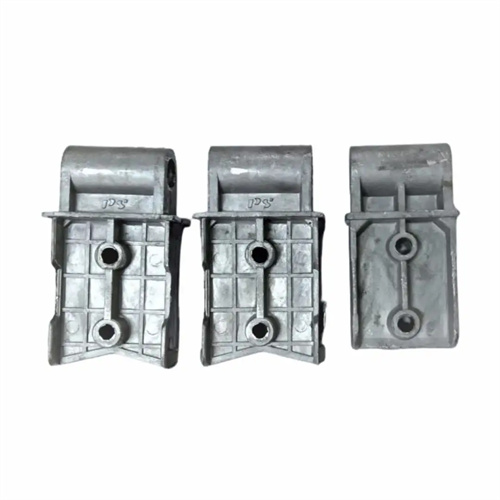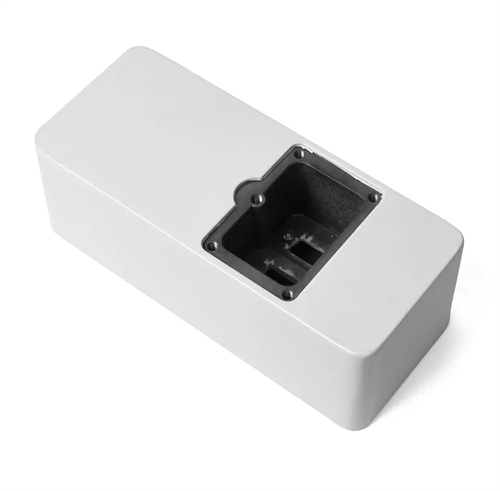Characteristics of the core pulling mechanism commonly used in die casting molds
Common core pulling mechanisms for die-casting molds can be categorized by power source and structure, including inclined guide pin core pulling mechanisms, hydraulic core pulling mechanisms, rack and pinion core pulling mechanisms, and bent pin core pulling mechanisms. Each mechanism has its own unique application scenarios and performance characteristics. Selecting the appropriate core pulling mechanism requires comprehensive consideration of core pulling force, core pulling stroke, casting structure, and production batch size to achieve an efficient and stable molding process. Understanding the characteristics of each mechanism helps to optimize mold design, balancing cost, efficiency, and reliability.

The most widely used type of core-pulling mechanism features a simple structure, low cost, and the absence of an additional power source. It utilizes the relative motion of the mold during mold opening to drive the core pulling. The inclined guide pin is fixed to the fixed mold, and the slider is mounted on the movable mold. During mold opening, the inclined guide pin pushes the slider via its inclined surface to pull the core out. After core pulling is complete, a spring or locating pin resets the slider. This mechanism has limited core-pulling force and stroke, generally not exceeding 8kN, and the stroke not exceeding 100mm. It is suitable for simple side core pulling of small and medium-sized castings. Its advantages are reliable operation and good synchronization. Its disadvantages are that the core-pulling speed is limited by the mold opening speed, and the clearance between the inclined guide pin and the slider is susceptible to wear, requiring regular maintenance to ensure accuracy.

Hydraulic core pulling mechanisms utilize a hydraulic cylinder as their power source, pulling and resetting the core via a piston rod. They offer high core pulling force, long stroke, and adjustable speed. Core pulling force can reach over 50kN, and stroke can be customized to 200mm-500mm, making them suitable for core pulling on large castings or deep-cavity structures. The hydraulic system can adjust the core pulling speed via a flow valve, enabling slow core pulling to prevent casting damage or fast core pulling to improve efficiency, offering far greater flexibility than mechanical core pulling mechanisms. Furthermore, hydraulic core pulling can be program-controlled and linked to mold movement, adapting to the demands of automated production lines. However, their disadvantages include the need for a hydraulic station, which is costly, and the need to route piping to avoid interference with other mold components, making maintenance more challenging.

The rack-and-pinion core-pulling mechanism achieves core pulling through the meshing transmission of a gear and rack. It is suitable for applications requiring rotary core pulling or long-distance core pulling, such as threaded hole forming. The mechanism consists of a rack core, gear, transmission rack, and guide. When the mold is opened, the transmission rack rotates the gear, which in turn drives the rack core to rotate and pull. It is characterized by smooth core pulling motion and high transmission precision, capable of performing complex spiral core pulling movements, with the core pulling stroke limited only by the length of the rack. The gear rack must be made of high-strength alloy and carburized and quenched to withstand the friction of the meshing transmission. The meshing clearance must be controlled within 0.01mm-0.03mm to prevent motion lag that affects accuracy. The disadvantages of this mechanism are its complex structure and high processing costs. It is suitable for high-precision castings produced in large quantities.

The bent pin core pulling mechanism is a variant of the inclined guide column mechanism. Its bent pin has a larger cross-sectional size and higher strength, and can achieve a larger core pulling force and stroke than the inclined guide column. The working section of the bent pin can be designed as a curve or a broken line, which can realize a complex core pulling trajectory within a limited mold space. It is suitable for occasions where the core needs to avoid other components. For example, when there are multiple staggered holes on the side of the casting, the bent pin can pull out different cores in turn through a broken line movement to avoid interference. The fit between the bent pin and the slider adopts a clearance fit with a clearance value of 0.02mm-0.04mm to ensure flexible movement. The advantages of this mechanism are good rigidity and long life. The disadvantage is that it is difficult to process. The curved section of the bent pin needs to be processed by CNC to ensure accuracy, and the cost is higher than that of an ordinary inclined guide column mechanism.

The selection of a core pulling mechanism should be guided by the principle of cost-effectiveness. For simple castings produced in small to medium batches, an inclined guide pin mechanism is preferred; for large, complex castings or automated production lines, a hydraulic mechanism is preferred; for high-precision threaded or rotary core pulling, a rack-and-pinion mechanism is preferred; and for complex core pulling trajectories within confined spaces, a bent-pin mechanism is preferred. Regardless of the mechanism chosen, precise calculations of the core pulling force and stroke are required to ensure strength and stability, while also ensuring ample maintenance clearance for future maintenance and parts replacement. By properly matching the core pulling mechanism to the specific casting requirements, costs can be minimized and production efficiency improved while ensuring quality.
